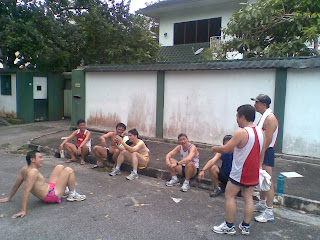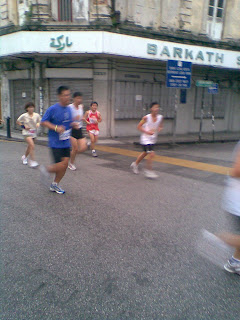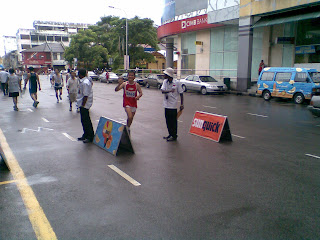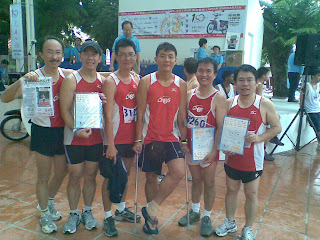Everything you need to know about stretchingStretching is overwhelmingly recommended - even prescribed - by sports medicine professionals and is widely practised by athletes in almost every sport. It seems to be one of those common sense things to do. But there are as many unanswered questions about stretching as there are scientific facts to support it.
A review of stretching research conducted by Ian Shrier MD, PhD and Kav Gossal MD, reported in The Physician and Sportsmedicine, revealed that the results of many of the studies on stretching are contradictory, inconclusive, or not necessarily applicable to humans.Nevertheless, Shrier, Gossal, Michael Alter MS, author of Sport Stretch, and Robert Anderson, author of Stretching, have compiled enough data to answer many of the questions frequently asked by serious athletes and exercisers. Here are some of those questions and answers.
Does stretching reduce injuries?'New evidence,' say Shrier and Gossal, 'suggests that stretching immediately before exercise does not prevent overuse or acute injuries.' They add that continuous stretching during the day and conducted over a period of time may promote muscle growth which, in turn, could reduce the risk of injury. Perhaps as significant as the injury prevention information are the data that point toward stretching as a means of increasing muscle size and strength.
Does stretching affect flexibility?Yes. There is conclusive evidence regarding stretching and flexibility. Loss of flexibility can be prevented and at least partially restored by stretching. However, that evidence is more compelling for a long-term stretching programme than for shorter periods of time. Stretching to increase flexibility minutes prior to an event may be possible, but a stretching programme over a period of months can lead to a sustained increase in range of motion.
Can stretching improve performance?Yes, if the stretches are designed to be sport-specific. One study showed that an increase in the temperature of the vastus lateralis (a muscle in the upper leg) achieved by stretching resulted in an increase in vertical jump and an increase in maximal cycling power. However, the study did not investigate whether or not the increase in temperature could have been achieved by other warm-up methods. Another study showed that a 10-week static stretching programme resulted in improved performance in tests involving speed, strength, power, or muscle endurance. Additional research has shown benefits in throwing a baseball and serving a tennis ball following a stretching programme that improved shoulder flexibility.
What is the difference between static and dynamic stretching?Static stretching requires that the muscle be stretched to a point of resistance and held for a period of time. Dynamic or ballistic stretching involves repetitive bouncing, rebounding or rhythmic motions and is generally thought to be more dangerous and less effective than static stretching. However, ballistic stretching is used by some physical therapists and athletic trainers to simulate the movements of certain sports.
What is PNF stretching?Proprioceptive neuromuscular facilitation uses alternating contraction and relaxation movements that are supervised and controlled by a trainer or therapist. PNF is an alternative strategy for increasing range of motion.
How long should a stretch be held?One 15-30-second stretch per muscle group is sufficient for most people, but some exercisers require longer stretches as well as more repetitions.
How many times should the same stretch be performed during one session?As mentioned earlier, some research suggests that one stretch per muscle group is sufficient. However, many professionals recommend two or three repetitions for each 10-second stretch, or one repetition of 30 seconds. The rationale for multiple stretches is that connective tissue responds better to low-force, long-duration stretching than higher-force, short-duration stretches.
Are there any benefits in holding stretches longer than 30 seconds? There is no evidence that this is the case.
Should stretches be held for the same length of time for each muscle group?No. Because the stretching properties vary from muscle group to muscle group, the optimal duration of a stretch and the frequency of stretching may also vary from person to person. Each athlete must determine the length of the hold that is most effective.
What is the stretch reflex?A stretch reflex occurs when a muscle is first stretched to an extreme. At that point, a nerve impulse signals the muscle to contract. It is a protective mechanism that the body uses to protect muscle tissues from tearing.
Why do some exercise scientists recommend stretching after a workout?'When the temperature of muscles is higher than normal, stiffness decreases and extensibility increases,' says Alter. 'Athletes who want to maintain or enhance their flexibility can partially achieve that goal by stretching when their body temperature has been elevated, making it safer and more productive than when at a normal level. Lyle J Micheli MD says that stretching for five minutes after exercise prevents muscles from tightening too quickly. He suggests that athletes go through an abbreviated version of the stretches performed before an activity.
Should stretching exercises be the same for healthy athletes and those recovering from injuries?No. Shrier and Gossal warn that injuries affect the stretching properties of muscles. Injured athletes may require stretches to be held longer to increase range of motion.Does the application of ice or heat have an effect on stretching?Warming up a muscle before stretch or using ice during static and ballistic stretches can increase the range of motion, but neither will prevent an injury. Exposure to increased or decreased temperature before or during PNF stretches has no effect. The mechanism by which ice and heat affect stretching is not clear, but both may have a pain-relieving effect that allows greater range of motion.
Does it help to warm up first, then do stretching exercises?
Generally, those who use an active warm-up prior to stretching get greater range of motion than those who only stretch. But any benefits in terms of injury prevention are more likely to come from warming up, not because of stretching. Shrier and Gossal say that if range of motion is the goal, stretches are helpful. If injury prevention is the goal, athletes should drop the stretching before exercise and increase the amount of time warming up. But the 'warming up' concept presents even more confusion because there is no universal definition of the term.
In summary... ... there appear to be more benefits from stretching than disadvantages, but the picture is not as clear as most athletes would like. The research suggests that stretching programmes should be individualised according to the athlete's physical make-up and level of conditioning.
Stretching routines should also be designed to achieve one of four things:
1. maintain or improve range of motion;
2. be free of pain;
3. recover from injuries that restrict flexibility or
4. achieve sport-specific goals.
If injuries are prevented along the way, consider it a bonus.
Anderson brings the common sense approach back to stretching. 'Good stretching is knowing your body. It has nothing to do with how far you can move a particular part. The feelings you get when you stretch are a good gauge. The right feeling is when you can perform a stretch but it doesn't hurt. Don't worry if you can't stretch as far as someone else. Some people just don't have the body to be as flexible as others.'






































 接着是传宾。
接着是传宾。
 永丰和秀权两人终于平手了。
永丰和秀权两人终于平手了。




